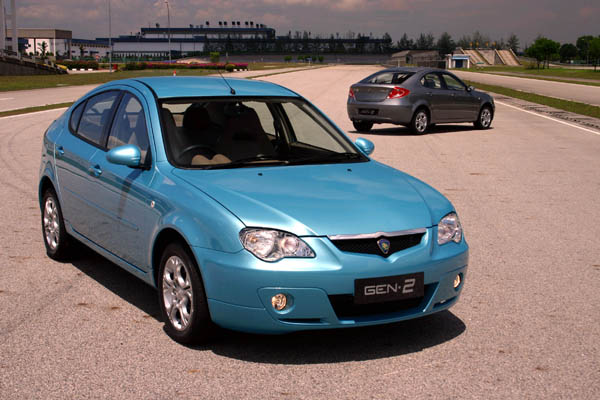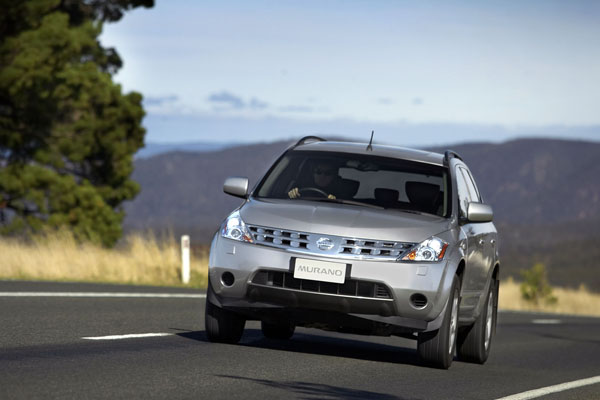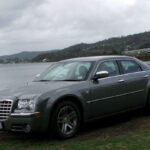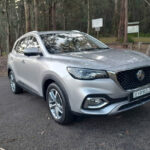Proton calls its new model the generation two – abbreviated to Gen.2 – because it’s the next major step forward in the life of this very ambitious Malaysian maker. When set up in the 1980s, Proton wisely sought assistance from established car makers, principally Mitsubishi, for much of the design input. Now Proton feels it’s time to set out on its own two feet, or should that be its own four wheels!
Another important marque is very much involved in the Proton story these days, British sports car maker Lotus. Lotus got into serious financial trouble during the late 1990s and Proton bought it out. Lotus remains a major player in Britain and also has a research and development (R&D) centre with Proton in Malaysia.
It made a lot of sense for Lotus to be involved in the Gen.2 and that’s precisely what happened. So we have the interesting situation of an economy car with a fair bit of input from a sports car maker.

The new Proton Gen.2 combines attractive styling with very good suspension and steering and will find a lot of buyers based on these strengths alone. At $17,990 for the lowest cost model it’s also pretty well priced for its class.
The body styling received a lot of praise during the time we spent with the Proton. In particular, observers liked the sporty look of the tail, and also commented favourably on the style of the nose with its ‘kite’ grille. Inside, Proton Gen.2 is just as interesting. You can see a fair bit of Alfa Romeo influence in the circular-dial layout and bold curves of the dash area. The vertical layout of the ventilation controls in the lower-centre console works especially well. What you don’t see inside is a glove box – believe it or not, someone appears to have forgotten to design one for this car.
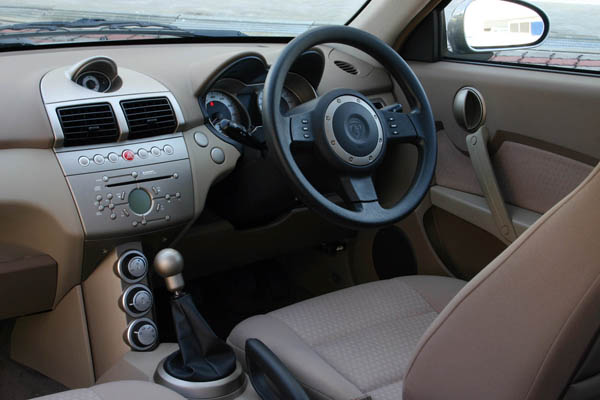 Lotus also did a lot of the engine work on Proton’s new four-cylinder unit. This is the first all-Proton engine and, in Australia, it comes with a capacity of 1.6 litres. We commented after the Australian launch of the car that the engine had barely enough performance for local needs. But the engine we’ve just tested had close to 5000 kilometres under its belt, so was almost fully run in. It was a lot freer and pulled better as a result. A sporting unit it’s not, but the typical buyer is likely to be happy enough with the way it operates.
Lotus also did a lot of the engine work on Proton’s new four-cylinder unit. This is the first all-Proton engine and, in Australia, it comes with a capacity of 1.6 litres. We commented after the Australian launch of the car that the engine had barely enough performance for local needs. But the engine we’ve just tested had close to 5000 kilometres under its belt, so was almost fully run in. It was a lot freer and pulled better as a result. A sporting unit it’s not, but the typical buyer is likely to be happy enough with the way it operates.
Using a relatively small 1.6-litre engine in a car in this class may mean it’s no ball of fire, but it does result in very good fuel economy. Our average for the week was a commendable 7.8 litres per hundred kilometres, with motorway running seeing that figure consistently under seven litres per hundred. Suburban use generally saw fuel figures in the eight to nine litre bracket.
The Lotus work on the suspension really shows through. For a front-drive car the Gen.2 is well balanced, light and responsive through the steering and generally very nice for a car in this class.
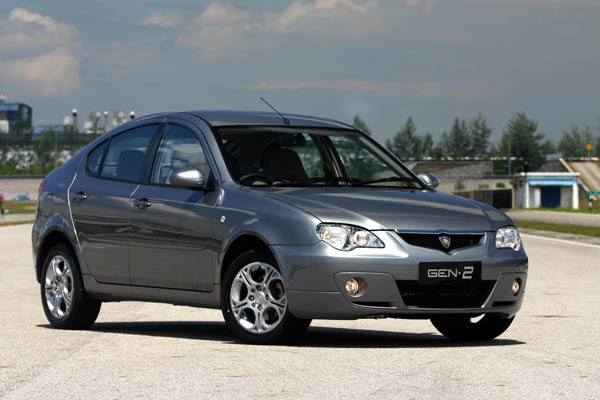
The Gen.2 we’ve just tested for a week had some body problems. A couple of the doors were poorly fitted, that for the front passenger needed a huge slam to close it correctly, whereas the driver’s one had too much wind noise from its top-front corner. And the steering wheel’s vertical adjustment was extremely tight. These sort of troubles are the sort of thing you can expect from very early-build cars, and in the case of the Gen.2 are exacerbated by the fact that an all-new factory is being used. Let’s hope Proton can sort out these defects as soon as possible.
The new Proton Gen.2 is well worth serious consideration. It has its flaws, but nothing that can’t be sorted out with some serious determination at production level. It’s price is pretty favourable and the Proton sales guys are anxious to make a good first impression with their latest car, so may well be willing to talk seriously about doing a special deal.
AT A GLANCE
MODEL RANGE
Gen.2 L-Line 1.6-litre five-door hatch – $17,990
Gen.2 M-Line 1.6-litre five-door hatch – $19,500
Gen.2 H-Line 1.6-litre five-door hatch – $20,990
FEATURES
ABS Brakes: Standard on M-Line and H-Line, not offered on L-Line
Air Conditioning: Standard on all models
Automatic Transmission: $2000 option on all models
CD Player: Standard on all models
Central Locking: Standard on all models
Cruise Control: Not offered
Power Windows: Standard on all models
Driver Airbag: Standard on all models
Passenger Airbag: Standard on all models
Front Side Airbags: Standard on H-Line, not offered on other models
SPECIFICATIONS (Proton Gen.2 H-Line 1.6-litre five-door hatch)
ENGINE
Capacity: 1.597 litres
Configuration: Transverse, four cylinders in line
Head Design: DOHC, four valves per cylinder
Compression Ratio: 10.0:1
Bore/Stroke: 76.0 x 88.0mm
Maximum Power: 82kW @ 6000rpm
Maximum Torque: 148Nm @ 4000rpm
DRIVELINE
Driven Wheels: Front
Manual Transmission: Five-speed
Automatic Transmission: Not offered
Final Drive Ratio: 4.05:1
DIMENSIONS, WEIGHT AND CAPACITIES
Length: 4310mm
Wheelbase: 2600mm
Width: 1725mm
Height: 1435mm
Turning Circle: metres
Kerb Mass: 1175kg
Fuel Tank Capacity: 50 litres
Towing Ability: 1000kg with braked trailer
SUSPENSION AND BRAKES
Front Suspension: MacPherson struts, anti-roll bar
Rear Suspension: Multi-link, anti-roll bar
Front Brakes: Ventilated disc
Rear Brakes: Disc
PERFORMANCE
0-100 km/h Acceleration: 10.5 secs
Standing 400 Metres: 17.4 secs
FUEL CONSUMPTION
City Cycle: L/100km
Highway Cycle: L/100km
STANDARD WARRANTY
Three years/unlimited km




